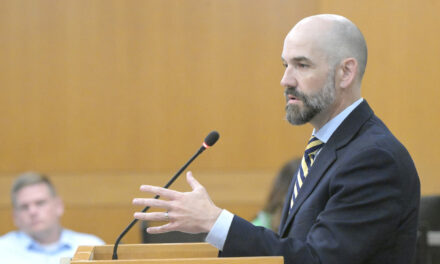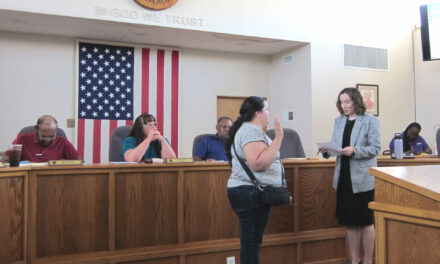On the March 5 ballot in Los Banos is Measure H, “Mayoral Term,” which reads, “Shall the term of office of mayor be four years? (A “no” vote would retain the current two-year term.)”
The Merced County Voter Information Guide, which was mailed to all voters along with the March 5 ballot, includes (besides a sample ballot) an “Impartial Analysis from City Attorney of Measure H” by William A Vaughn, as well as arguments in favor of the measure and arguments against the measure.
The argument in favor of Measure H is signed by Brett Jones, City of Los Banos Council Member; John Cates, City of Los Banos Planning Commission Chairman; Michael Hughes, former City of Los Banos Police Chief: Joe Gutierrez, Business Owner; and Doug Young, Pastor, Community Leader.
The arguments against Measure H are signed by Kathy Ballard and Julie Creighton.
The Voter Information Guide, as a result, contains a great deal of information to help voters make their own decision on Measure H.
Looking back into Los Banos history, Dan Nelson, director of Los Banos’ Milliken Museum, found that the March 5 election won’t be the first time Los Banos voters will have been asked to extend the mayoral term from two to four years.
In 1970 a similar measure was on the ballot and the results were 1,494 votes for a two-year term and 604 votes for a four-year term.
In 1972 the same measure was on the Los Banos ballot with similar results, 1,426 for a two-year term and 555 for a four-year term.
In fact, the 1972 election in Los Banos was the first time voters directly elected a mayor. Prior to that year, the city council, after each election (every two years), would appoint a mayor.
City council members back then, as they are now, were elected for a four-year term. Prior to 2014, all council seats were voted on by all voters in the city.
On Nov. 4, 2014, however, an ordinance was approved by a majority of votes cast in the Nov. 4, 2014, General Election, which divided the city into districts.
Today there are four council seats, each representing a different district in the city and each voted on only by residents of that district. The elections of the four seats are staggered, with two council members elected every two years. And the mayor is directly elected by all Los Banos voters.
Returning to the 1970s, a student of history will note that in 1970 Los Banos voters passed a proposition (by approximately a 2-1 majority) which stated that the mayor be directly elected. Two years later, in the 1972 election, was the first time that happened.
In the 1972 election Attorney Neil van Winkle ran unopposed and became Los Banos’ first directly elected mayor. (As a side note, in that same election, Elmer Austin, in a contest for a city council seat, defeated the second highest vote getter, Ted Smith , by just ten votes, which prompted many Los Banosans afterward to use that as an example of every vote counting.)


